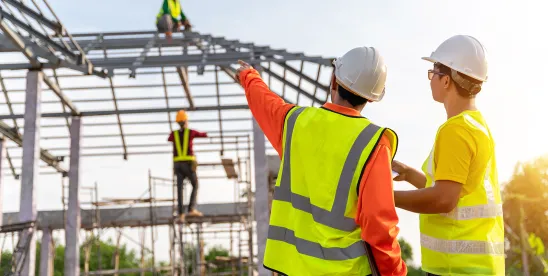As we enter the last quarter of 2024, we want to again remind our New Jersey community association clients to review whether their buildings require structural inspections pursuant to the new Structural Integrity Law (N.J.S.A. 52:27D-119 et seq.).
Who must comply?
Unlike the January 8, 2024 law relating to reserve studies and reserve funding, (which applies to nearly all common interest communities in New Jersey and is described in more detail in our blog article dated August 14, 2024), the structural integrity law’s requirements only apply to certain “covered buildings.” The law describes a “covered building” as a residential condominium or cooperative building that has a primary load bearing system comprised of a concrete, masonry, steel or a hybrid structure (such as heavy timber and buildings with podium decks). Standard wood framed construction, such as that commonly found in single-family homes or townhouses, are not covered buildings. Similarly, buildings with concrete, masonry or steel construction that are non-residential (such as a detached parking garage), are not “covered buildings” subject to the law’s requirements.
How do Communities with covered buildings comply?
A community with a covered building must hire a structural engineer to perform a structural inspection pursuant to standards established by the American Society of Civil Engineers or another nationally recognized structural engineering organization. If the structural engineer’s inspection reveals that the building’s primary load bearing system requires any repairs (or even maintenance), the report will include the nature of the concerns and all required repairs/maintenance along with a deadline by which this work must be performed. Copies of the report must be sent to the local construction official or municipal enforcing agency.
When do Communities with covered buildings need an initial structural integrity study?
Covered buildings that were newer than 15 years old as of January 8, 2024 (which is when the law took effect) must have a structural inspection of the primary load bearing system and report issued within 1 year of the 15th anniversary of the building’s Certificate of Occupancy. For example, if a building’ C.O. was issued on January 1, 2015, that community will have until January 1, 2031 (15 years + 1) to obtain its initial inspection report.
For communities with covered buildings that were older than 15 years as of January 1, 2024, there is a firm deadline of January 8, 2026 (2 years from the law’s enactment) to obtain an initial structural integrity report.
Notwithstanding these deadlines, if a covered building shows signs of any “observable damage” to its primary load bearing system, the community must have a structural engineer inspect and issue a report within 60 days. Although “observable damage” is not defined by statute, an example would include visible damage to a wall or interior podium support caused by a car crash or other significant impact event.
When do Communities with covered buildings need subsequent structural integrity studies?
In the initial structural integrity report, the engineer must provide a deadline for the next investigation and report. For buildings that obtained their initial inspection report during the first 20 years since issuance of a C.O., the next inspection may not be more than 10 years after the initial inspection. For buildings that obtained an initial inspection when the building was older than 20 years, the next inspection may not be more than 5 years after the initial inspection. These are only outer limits – an engineer has discretion to designate an earlier inspection deadline. Similarly, any covered building that exhibits “observable damage” after the initial inspection must have a subsequent inspection within 60 days.
Our building is over 15 years old and needs a structural inspection sooner rather than later. What should we do?
If your community has a covered building that was older than 15 years as of January 8, 2024, the deadline to get a structural inspection report is January 8, 2026. Even though that is over a year away, you should contact the association’s engineer now to get on the schedule. We anticipate there will be a number of communities with covered buildings that procrastinate until later next year and flood engineering firms with urgent requests for inspections. This may result in higher, supply-and-demand pricing and rapidly approaching deadlines that can be easily avoided by engaging an engineer now.
What happens if the engineer finds structural integrity issues?
If the engineer finds concerning structural issues, the report will describe them in detail and identify what repairs and/or maintenance is necessary to address them, along with a timeline for doing so. This scope of work and timing can range from minor annual preventative maintenance up to urgent repairs. The structural integrity law provides association boards with legal mechanisms on how to fund urgent structural repairs such as the ability to borrow from reserves (with limitations) or to raise funds through special assessments or bank financing.
Melissa Volet contributed to this post







 />i
/>i
